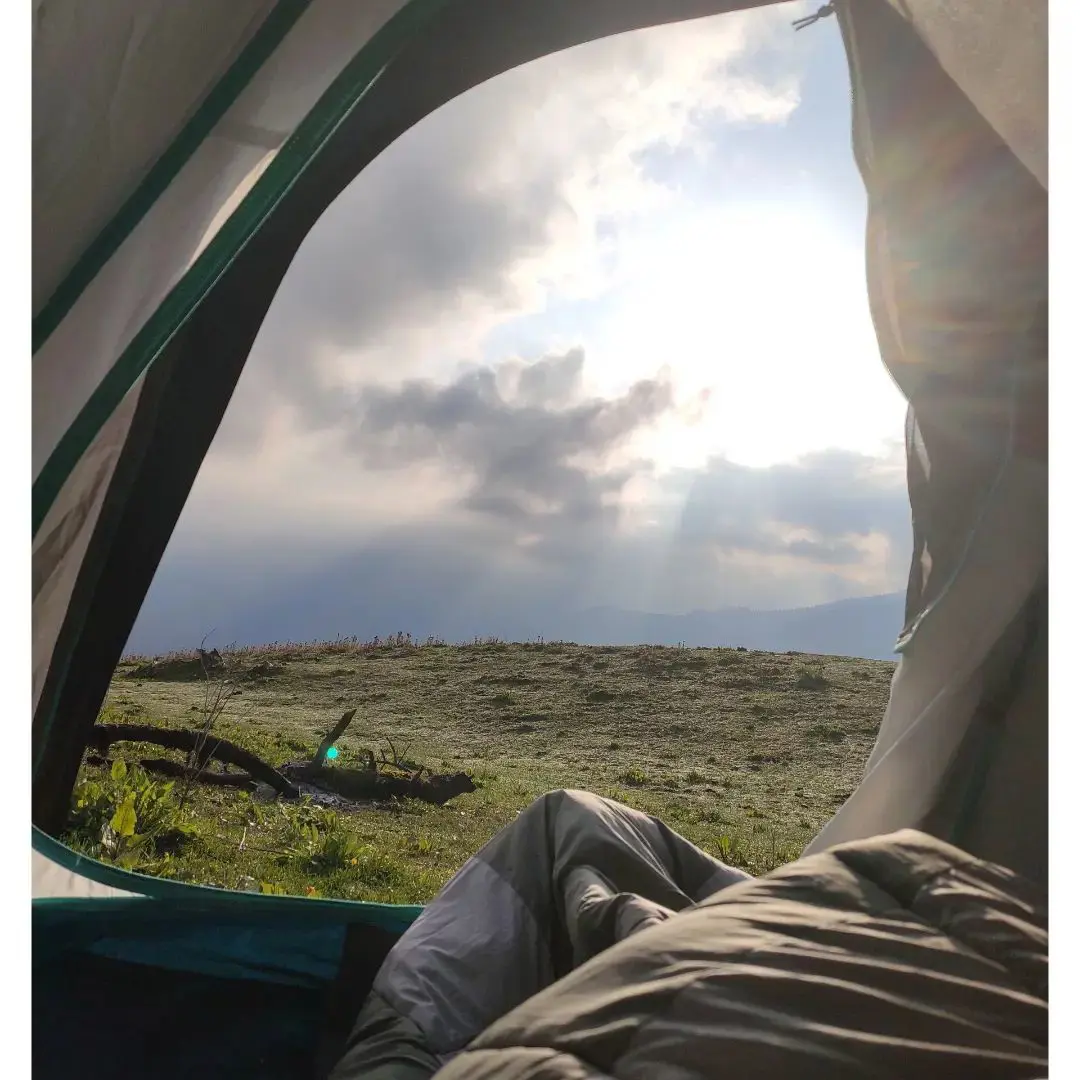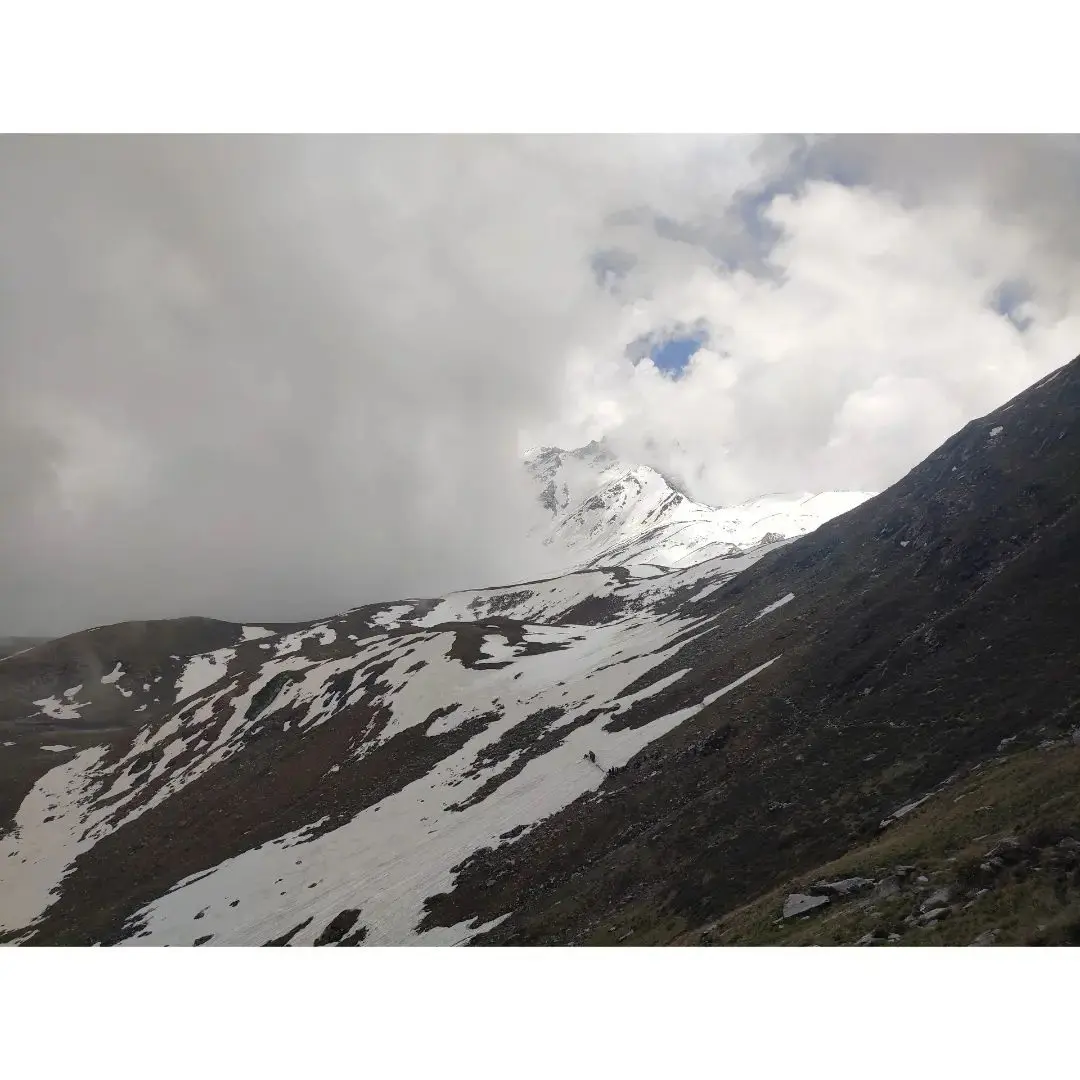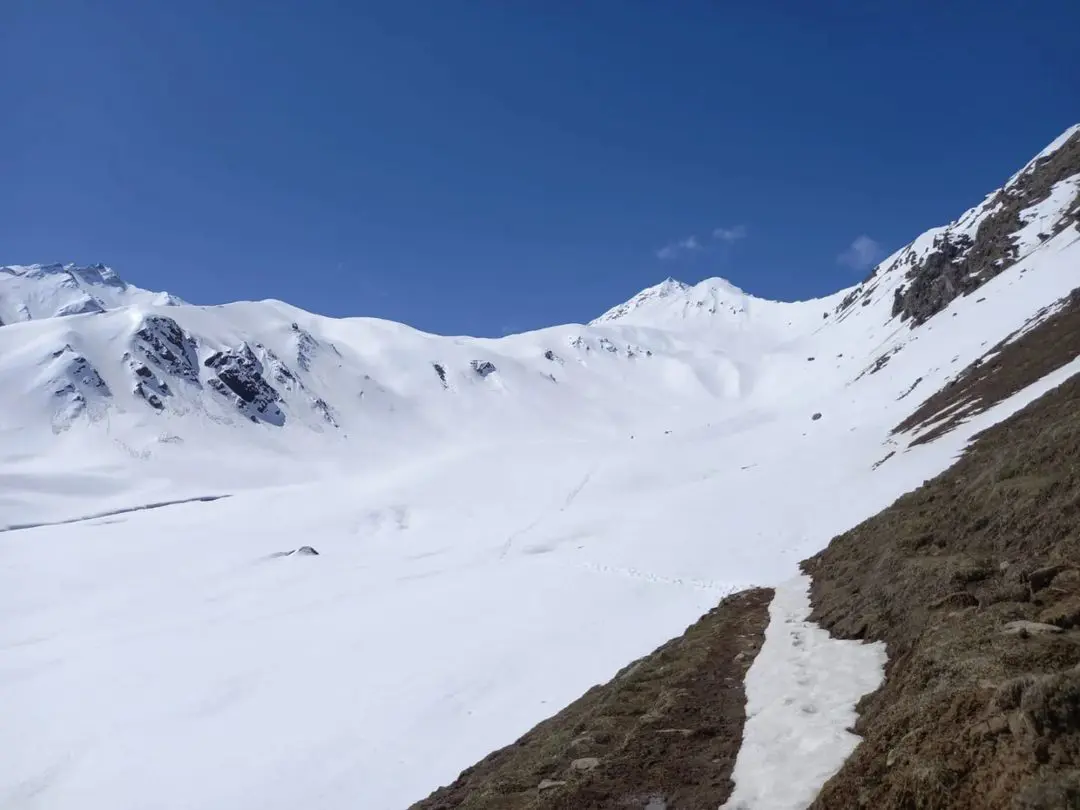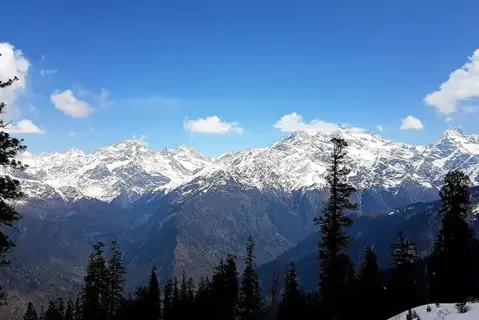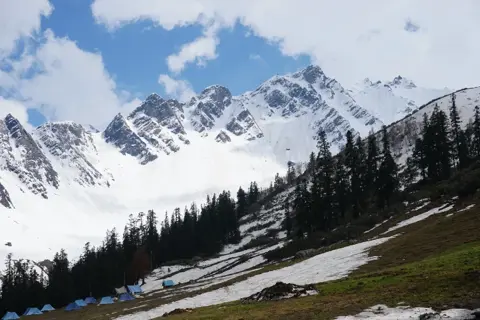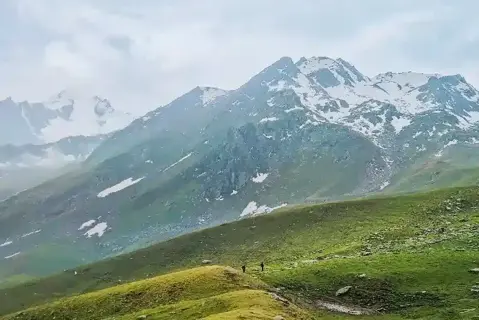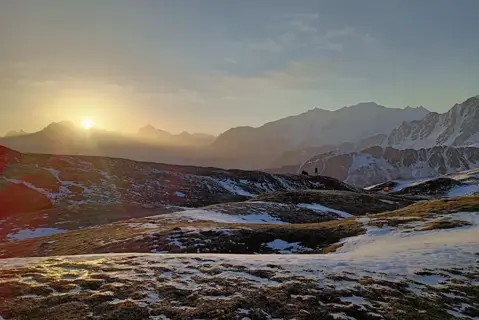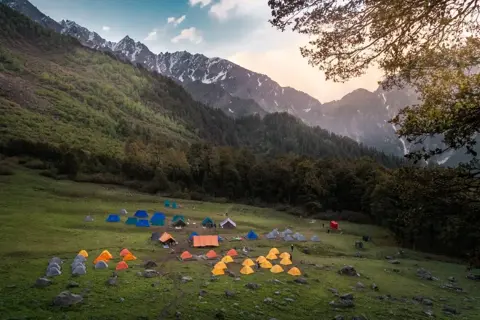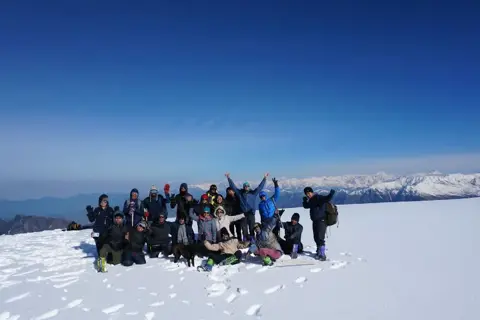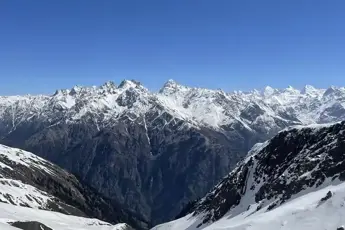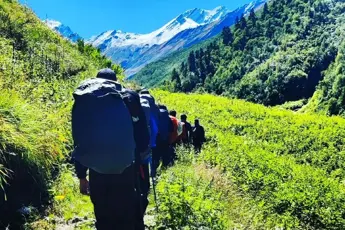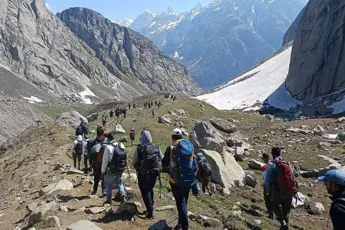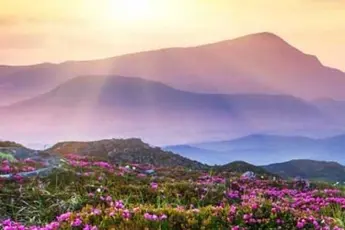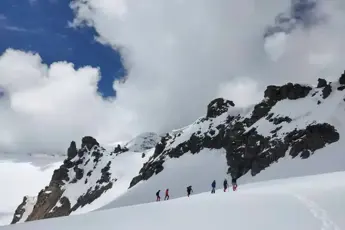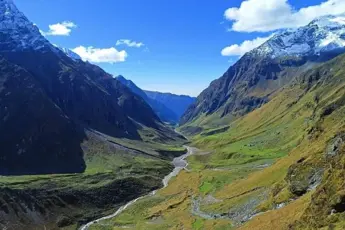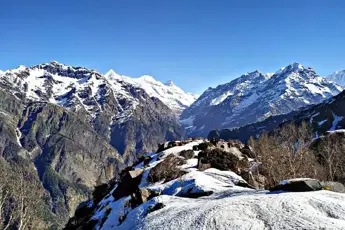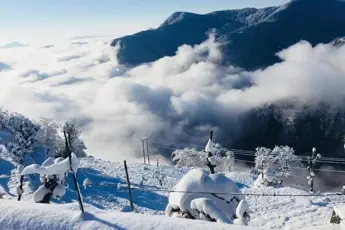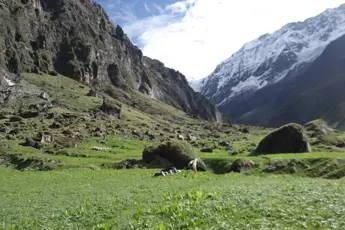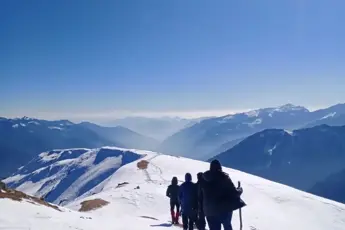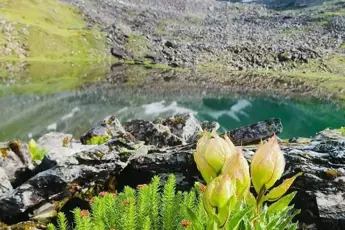The Sar Pass Trek is a stunning and loved path in Himachal Pradesh's Parvati Valley, great for new and bold walkers. At about 13,800 feet high, this trek mixes snow, green fields, thick woods, and cute mountain towns. It starts in Kasol, a small town known for its fun feel and quiet places. The path goes up through small places like Grahan, Min Thach, Nagaru, and Biskeri Thach, each with its own views and spots to see. A big part of the Sar Pass Trek is how the land changes from deep pine and deodar woods down low to snowy highlands near the pass. The path itself can be hard, more so in steep snowy parts, but the wide views at the top are worth it. On clear days, you can see high peaks like Tosh Glacier and the green valley down below. One fun thing about this trek is camping under the stars in the mountains. The fields of Biskeri Thach, full of wildflowers, and the calm of Min Thach make for great camping spots. The whole way is rich in beauty and life, making every step a joy for those who love nature and taking photos. Perfect for a 5 to 6-day trip, the Sar Pass Trek is good for those trying snow treks without high mountain climbing. With always changing scenes and medium-hard paths, the Sar Pass Trek offers a great trip into the heart of the Indian Himalayas.History of Sar Pass TrekThe Sar Pass Trek is part of the lovely and rich Parvati Valley of Himachal Pradesh. It does not have big historical marks like old trade paths or big fights, but it is key to local life and has grown into a top trek path in the Indian Himalayas. The name "Sar Pass" comes from the local word "Sar", which means "lake". Long ago, shepherds and townsfolk used these paths for moving animals for grazing, and there was said to be a tiny frozen lake at the pass's top, hence the name, Sar Pass. These paths were vital, linking far towns, letting goods trade, and keeping social links. Even now, towns like Grahan, Min Thach, and Pulga keep old ways that show centuries of customs. In the late 20th century, as India's adventure tourism rose, Sar Pass became known as a good path for new and mid-level walkers by groups like the Youth Hostels Association of India (YHAI). Its mix of medium hardness, different scenes, and easy reach from Kasol made it a top choice for adventure camps, school trips, and new trekkers. The Parvati Valley has a long past, too. Known for its deep, calm and spiritual feel, the valley has drawn sages, monks, and those seeking peace for ages. Though not listed in ancient tales, Sar Pass is close to spiritual spots like Kheerganga and Manikaran, adding to its cultural charm. Over time, the path changed from a local shepherd’s way to a modern trek spot, pulling many each year. The trail got liked not just for its Himalayan looks but also for its mix of woods, snow paths, and quiet camp spots. It has also helped the local money scene by creating chances in home stays, guiding, and travel services. Lately, with more people caring about the Earth, walkers and local leaders are trying to keep the area's nature safe. Efforts to trek without harm, manage waste, and push for careful tourism are now part of the Sar Pass trek culture. So, the story of the Sar Pass Trek is a mix of local ways, spiritual feel, and new trips. It stands today as not just an exciting Himalayan path but also a journey through time, nature, and the strong spirit of the mountain folks who have kept this path for ages.Nearby Places around Sar Pass TrekKasol: Often called the “Mini Israel of India,” Kasol is the main spot for the Sar Pass Trek. It's a quiet town known for lovely views, riverside cafes, Israeli food, and a free-spirited style. Kasol is great for getting used to the high altitudes before the trek and chilling out after. It's a mix of local and global vibes.Manikaran Sahib: Just 4 km from Kasol, Manikaran is holy for both Hindus and Sikhs. Known for its hot springs and the well-known Gurudwara Manikaran Sahib, it draws pilgrims and trekkers seeking the warm baths and a holy feel. The springs are thought to heal, and they make the area feel magical.Tosh Village: Tosh sits high at about 7,900 feet and is calm. Snowy tops and apple trees wrap it up, making it a top pick to add to your Sar Pass trip. There are great views, simple homes to stay in, and peace all around. It's also where you start the Tosh Glacier trek.Kheerganga: Known for its warm water springs and an old Shiva temple, Kheerganga is a top trekking spot in Parvati Valley. The walk there passes green forests, waterfalls, and wide views. Many add a quick trip to Kheerganga with Sar Pass to get both adventure and quiet.Pulga and Kalga Villages: Near Barshaini, Pulga and Kalga are small, quiet places. They're known for a calm air, lovely wooden homes, and quiet paths. They're ideal for those who want peace and local life, away from busy spots.Malana: A few hours from Kasol, Malana is old and apart from the others. It's known for its ways, language, and self-run way of life. It's like one of the world's oldest places with its own rules. It also has a trek with great views of nearby peaks.Rasol Village: A hidden spot, Rasol is tucked in the hills over Kasol. You can only walk there. Known for pure beauty, a calm life, and lively culture, it's perfect for trekkers wanting new places after the Sar Pass.Best Times to Visit the Sar Pass TrekMay to Early July: This is a favourite time for the Sar Pass Trek. In May and June, the path keeps its snow, mainly in the higher spots like Nagaru. The weather is nice with clear skies. Groups like YHAI have trips then.Mid-July to August – Monsoon Time: Heavy rain hits the area, making paths slick and risky. It's not safe for trekking. However, Kasol and Tosh turn lush and green, pulling those who want to see the beauty without the high climb.September to October – After Monsoon: A great time without snow. It's cool and clear, and the land is fresh after rain. There's no snow at the pass, but the peak views are clear and stunning, great for photos.November to April – Winter Close: Sar Pass closes in winter due to lots of snow and cold. Paths are shut, and villages are tough to get to. Only skilled climbers with the right gear try routes then.How to Reach Sar Pass TrekBy Airport: The closest airport is Bhuntar, about 31 km from Kasol. It's small with few flights, mainly from Delhi and Chandigarh. From there, take a taxi or bus to Kasol. It's a 1 to 1.5 hour drive with pretty valley views.By Train: The nearest small train station is Joginder Nagar, but better to go to Chandigarh. It links to most big cities. From there, get a taxi or a Volvo bus to Bhuntar or Manali, then local transport or a cab to Kasol.By Road: Kasol connects well by road. Take a private or public bus from cities like Delhi or Chandigarh to Bhuntar or Manali. Then, either a local bus or a cab to Kasol. Delhi to Kasol is around 520 km, about 12–14 hours on the road.Why Book with escape2exploreWhen exploring the Sar Pass Trek and beyond, escape2explore stands out as a trusted name in adventure and experiential travel. Here’s why hundreds of travellers choose us for their getaways:Trusted, Well-Reviewed Local Operator: escape2explore has gained the trust of thousands of content tourists all over India. With persistent positive feedback and an unblemished reputation for delivering quality experiences, we assure you that your experience will be hassle-free, memorable, and value-packed. Our insider local knowledge guarantees that you will always be in safe hands.Seasoned Guides: Our trips are led by friendly, trained, and professional guides who are passionate about the outdoors and your safety. Whether it's a beach trek, a cultural tour, or a spiritual walk through temples, our team knows the terrain, the stories, and how to make each moment count.Safe & Curated Itineraries: Your safety is our number one priority. Our tour packages are thoughtfully crafted with safety measures, researched accommodations, and easy travel arrangements. We take care of the details so you can have the experience hassle-free and worry-free.Unique Experience That You Won't Find Anywhere Else: With escape2explore, you discover more than the tourist attractions. We go off the beaten track with hidden beaches, unusual treks, offbeat cultural destinations, and true interactions.


